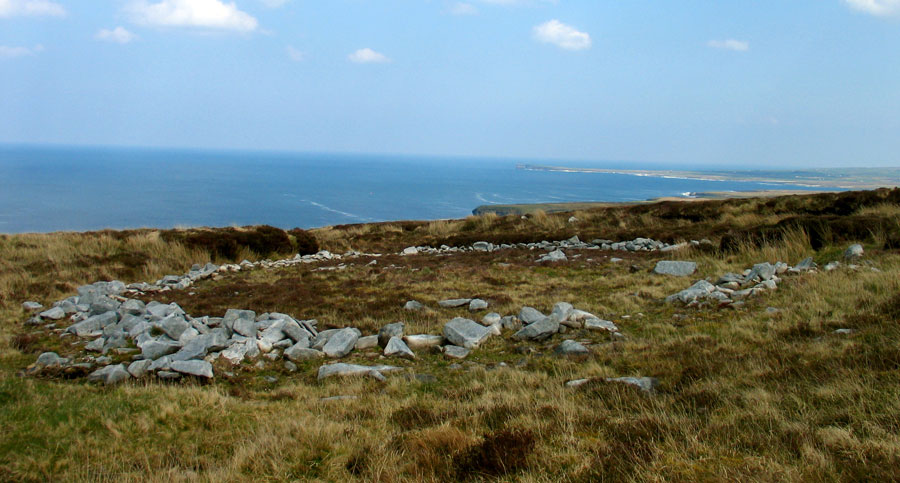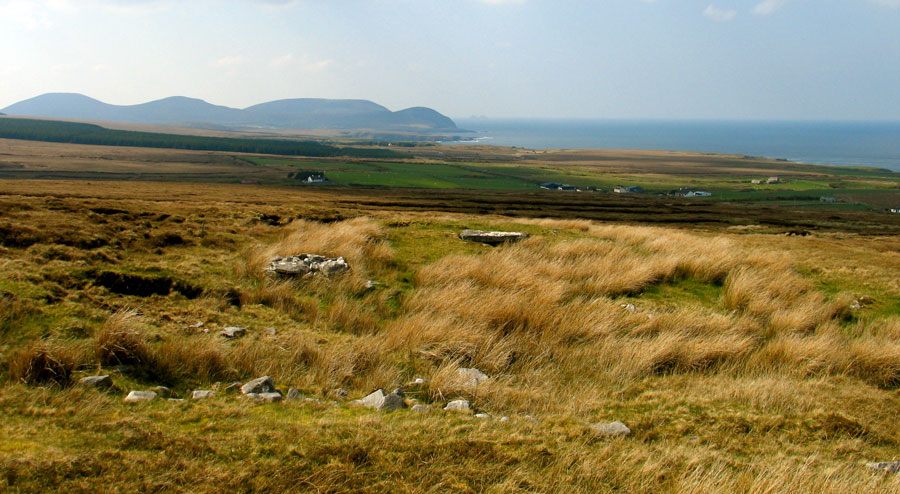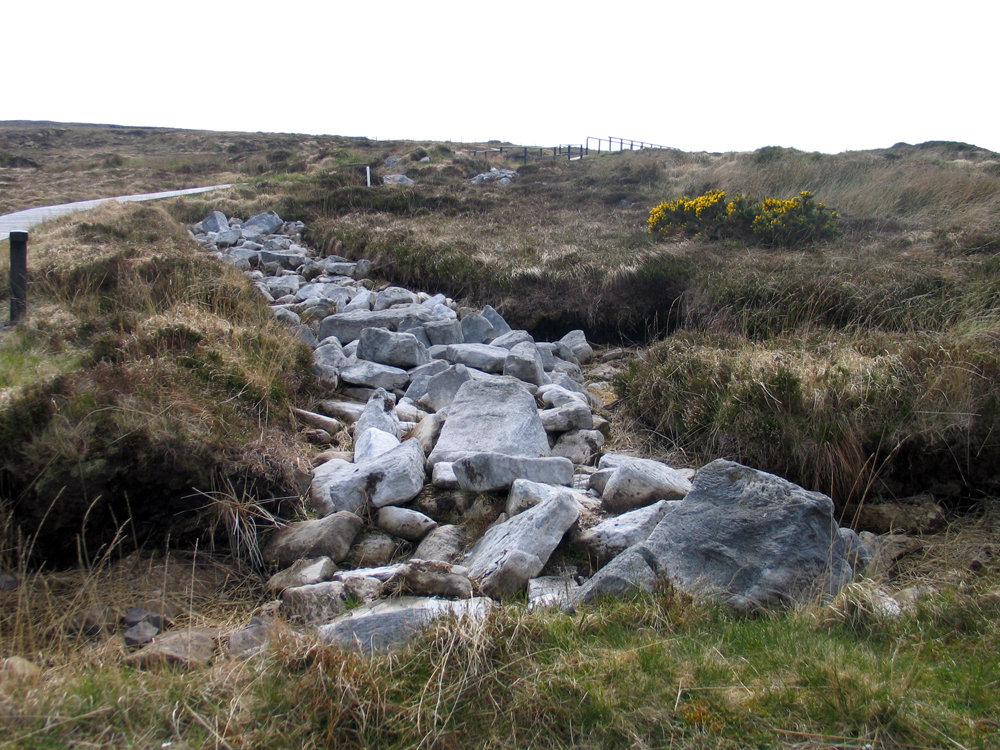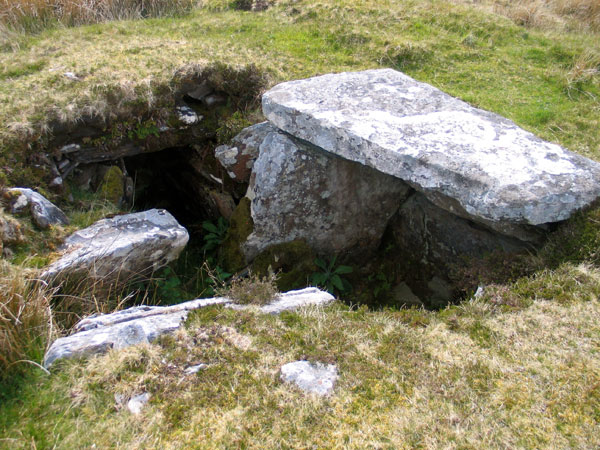The Céide Fields
Situated on the north coast of County Mayo, the Céide Fields offers a glimpse of the life of early farming communities in Ireland stretching from the neolithic through to the bronze age.
The site consists of an extensive set of field systems, considered by some to date to the bronze age, with associated hut sites and enclosures, and surrounded by a cluster of impressive neolithic court-cairns.
Though the main concentration of field systems are found at Céide, as well as a scattering of other monuments, they stretch for several miles east and west. More walls and monuments have been found on the hill of Rathlackan some 12 kilometers east of Céide, while monuments, fields and dwelling sites have been found at Belderg a few kilometers west of Céide.
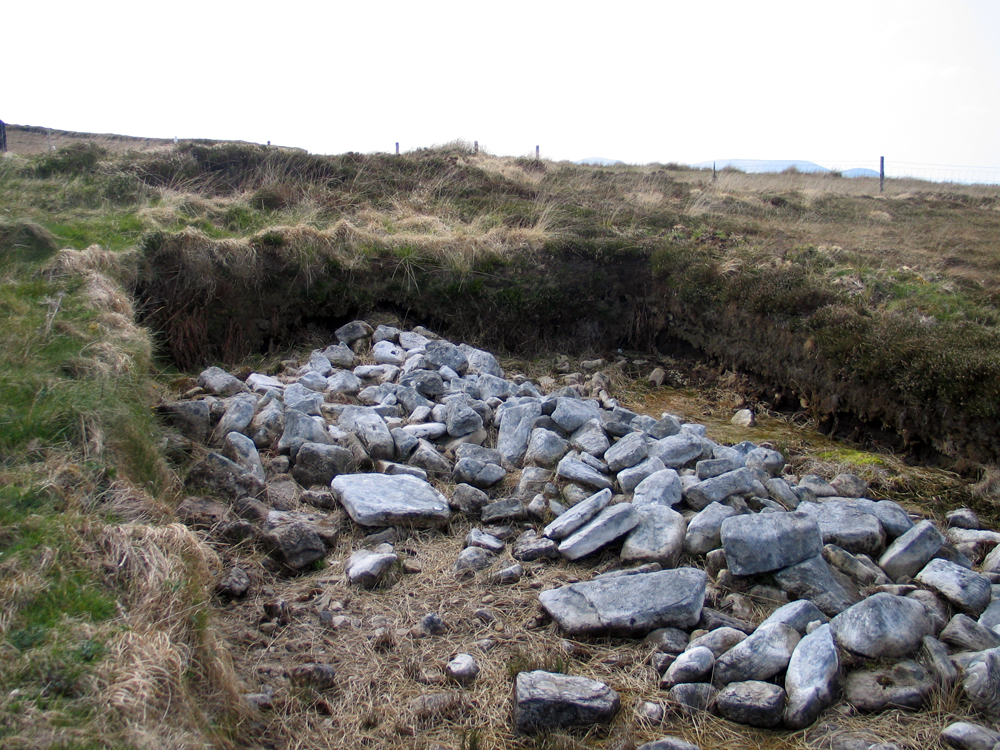
The picture presented today is that neolithic colonists farmed the land here, planting crops such as barley and emmer wheat, and kept cattle and sheep as their livestock. The main type of monument found in the area are neolithic court-cairns, though there are two probable passage-graves on the long ridge of Sreeloga Hill close by.
Several court-cairns are scattered across the Céide Fields. For many years, these were considered to be the oldest type of megalithic monument in Ireland, but more recent research on the Sligo passage-graves has shown that the courts may be contemporary or slightly younger than the passage-graves. The causewayed enclosure at Magheraboy in Sligo is currently the oldest dated neolithic monument in Ireland.
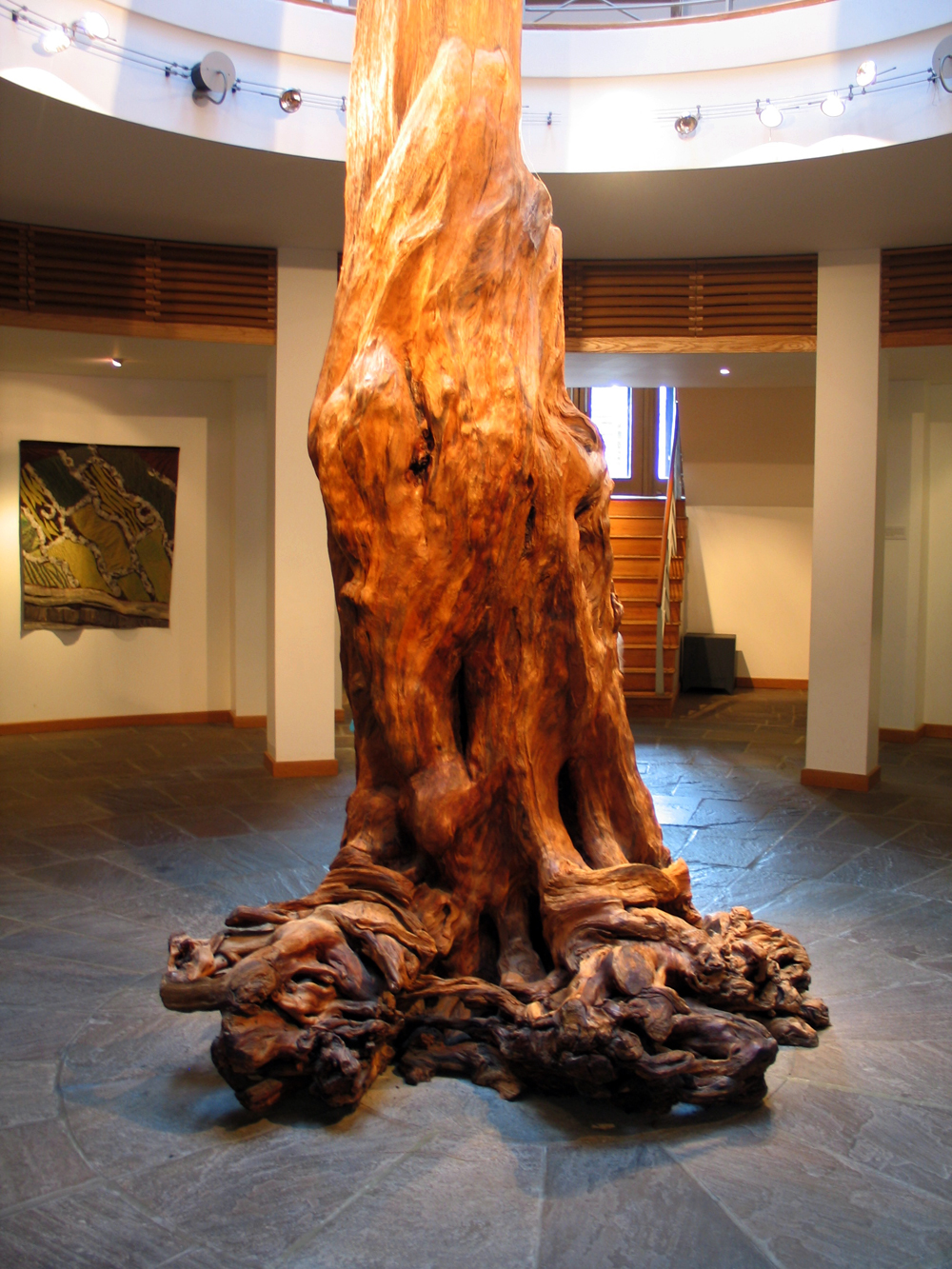
This presents an interesting picture when one looks at the mythology of the region, which deals with two tribes, the Formorians and the Túatha Dé Danann. The myth of the Second Battle of Moytura tells of two competing groups of farmers who arrive in Ireland, which is not uninhabited, but peopled by a tribe called the Firbolg.
We now believe, based on aDNA evidence, that the builders of Irish neolithic court-cairns originated in Anatolia some 10,000 years ago. The original farmers spread out in search of land. One group migrated through the Mediterranean, spreading the new religion of farming, eventually reaching Spain and France about 7,500 years ago. The other group, called the Bandkeramik people, migrate overland up through the Balkans, following the course of rivers such as the Danube. They also flood into France in great numbers.
It seems that overcrowding and competition for land and resources lead both the Bandkeramik and Passage-grave people to spearhead the colonisation of the large islands to the north.

